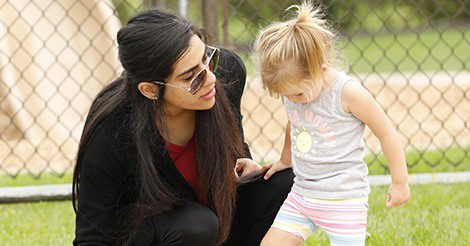Managing Angry Feelings
Through our Kind Child school culture, we have learned that friends work together to solve problems and that takes clear communication. Your child can begin to use words to express her feelings. We all feel anger from time to time. Unfortunately, children’s instinctive reaction to angry feelings can be to act out through angry behaviors until they learn a more constructive way to handle those feelings. As a parent role model, your child is watching how you handle frustration and anger. If your child sees you lose your cool, then she may be more likely to have trouble managing her own behavior.
Instead, we use a different technique at school to help children learn a positive way to respond to angry feelings. First, we encourage upset children to take deep breaths to calm down. Then, we help facilitate children talking through their feelings and any wants or needs in the situation. Sometimes children need adults to model the wording for them, such as “I feel angry, because you ripped my painting” or “I’m mad. You took my toy and I want it back.” It takes time to learn a new habit for responding to angry feelings, but through repetition and consistency at home and school, we can help your child master this important communication and socialization skill.
Age-appropriate Adaptations:
- Two-year-olds—Teach your child how to take calming breaths. Breath in deep through your nose and then pretend to blow out a candle on your finger. If you want, you can practice with real candles so your child sees how hard she need to exhale in order to extinguish the flames. Make sure you introduce and practice this activity when your child is calm, so she is more likely to use it when she is upset.
- Three-year-olds—Share with your child how all feelings are okay; it’s what we do with our feelings that matters most. Model for your child how you manage your angry feelings with constructive strategies. The next time you feel upset, verbalize for your child what you are doing to work through it. For example, you could say, “Ugh! I just dropped my cup and spilled my drink everywhere! That’s so frustrating! I feel angry that I made such a mess. I’m going to take 3 deep breaths to help me calm down before I clean it up, because I don’t want to stay angry.” Children can’t always interpret what you are doing and why, so verbalizing it for them can help them to understand what they can do the next time they feel angry. Then when that happens, remind them of your example.
- Four-/Five-year-olds—Talk with your child about a variety of positive strategies he can use when he feels angry, such as taking a calming breath, asking someone to ‘Stop,’ walking away, asking for help, squeezing a pillow or stuffed animal, stomping his feet, crumpling or ripping paper, drawing a picture of his angry feelings, and sharing how he feels with an ‘I’ statement (“I feel angry because this happened”). Practice the strategies to find which one your child connects with most. Then encourage your child to try that the next time he is angry.
Skills Supported: social-emotional skills (identifying and communicating feelings), problem solving, conflict resolution, self-control

